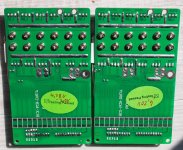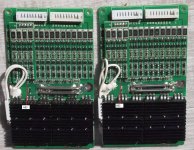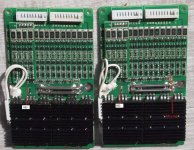Yes, I use a balancing charger.
I only have the monitors on while I'm actually riding. When I've done riding, I fold the bike and put it in the car, and I *have* to disconnect the batteries to do that, the bike is much heavier if they're attached.
I have a 40 amp fuse which I'm hoping would blow in the case of a short circuit. It's a standard car-type fuse, so I'm pretty confident it will work.
I only have the monitors on while I'm actually riding. When I've done riding, I fold the bike and put it in the car, and I *have* to disconnect the batteries to do that, the bike is much heavier if they're attached.
I have a 40 amp fuse which I'm hoping would blow in the case of a short circuit. It's a standard car-type fuse, so I'm pretty confident it will work.




